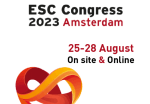Severely calcified coronary stenosis poses a significant challenge for coronary angioplasty procedures. Modifying plaque before stenting is crucial to a successful intervention, since it will prevent the sub expansion associated to worse clinical outcomes at followup. The tools employed to assess complex lesions include specialized balloons such as cutting, scoring, or high pressure balloons, as...
See the Presentations of the 2023 Perú Sessions
The XLVII SOLACI Regional Sessions – 16th Andean Region took place in Lima, Peru, between November 16 and 17, 2023.It was an extremely successful event that featured the participation of prestigious national and international guests and a high-level scientific program. Below, we share some of the presentations that were made during the Sessions. Dra. Carla...
See the Presentations of the 13th ProEducar Fellows Course
During SOLACI-SBHCI 2023, our traditional education program for young interventionists ProEducar Fellows Course was held. Discover the presentations of the prestigious interventionists that made part of this 13th edition here below. Dr. Gustavo Vignolo (UY) – “Trigger: STEMI learning clinical case” PRESENTATION Dr. Roger Renault Godinho (BRA) – “Why and how should I use Radial access? Step by Step” PRESENTATION...
Should We Use Ultrasound to Guide Transfemoral Access Routinely?
Currently, transfemoral access (TFA) is used in large-caliber procedures and when transradial access is not successful. The use of ultrasound (US) to guide access has emerged as a technique that allows for precise cannulation, avoiding accesses above and below the inguinal ligament. However, evidence regarding the effectiveness of this tool has shown variable results. Two...
Cardiac Angiography: Necessary for CABG Patient Diagnosis?
Cardiac revascularization surgery (CABG) has shown positive results at long term in CAD patients with multivessel or left main disease. However, we are well aware that, after CABG, there might be native disease progression over time. Also, at followup, we often see high incidence of venous graft failure. According to registry data, approximately 1 in...
AMI and Multivessel Disease: Can We Perform a Single Procedure?
Percutaneous coronary intervention (PCI) is considered the treatment of choice in ST-segment elevation myocardial infarction (STEMI). However, it is widely acknowledged that, in many cases, there are significant lesions in other coronary arteries. Previous randomized studies have shown that complete revascularization in a second procedure is more beneficial than intervention only in the culprit artery....
What to Do in Cases of AMI with Multivessel Disease
The presence of lesions in multiple vessels is common in ST-segment elevation myocardial infarction (STEMI). It has been shown that, when they are treated in a second procedure, patients have a better outcome. To date, there is limited information available on percutaneous transluminal coronary angioplasty (PTCA) in vessels with severe non-culprit lesions during primary angioplasty....
ROTA.shock Outcomes: Intravascular Lithotripsy vs. Rotational Atherectomy
At present, severe calcified coronary stenosis poses a significant challenge for PCI. A successful intervention will require plaque modification prior stenting, seeing as sub-expansion has been associated with worse clinical outcomes at followup. The tools normally used to treat these complex lesions include specialized balloons such as cutting, scoring, and high pressure balloons, as well...
ESC 2023 | Anticoagulation After Primary PCI in STEMI Patients
The empirical prescription of anticoagulants after percutaneous coronary intervention (PCI), also know as post-procedural anticoagulation (PPA), is nowadays a common practice that uses various types of medications. Despite studies like HORIZONS-AMI and EUROMAX, in which 41% of patients received PPA, and the CCC-ACS registry, where 75% of subjects received PPA after primary PCI, European and...
MACT Study: Monotherapy with P2Y12 Inhibitor Associated with Colchicine after Acute Coronary Syndrome
Dual antiplatelet therapy (DAPT) is the current standard for preventing thrombotic events in high-risk patients with coronary artery disease, as well as in patients with acute coronary syndrome (ACS) undergoing percutaneous coronary intervention (PCI). However, this approach increases the risk of bleeding. To reduce this risk, there have been studies that discontinued the use of...









